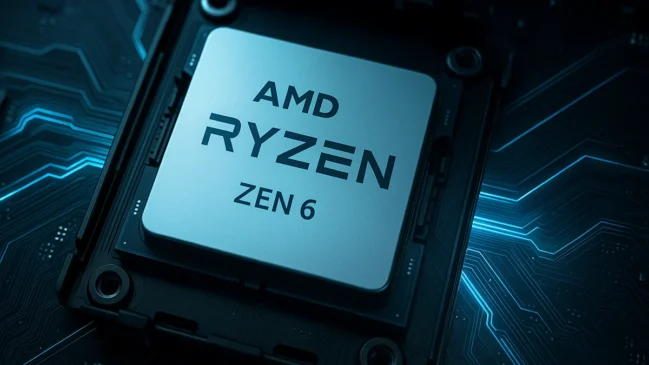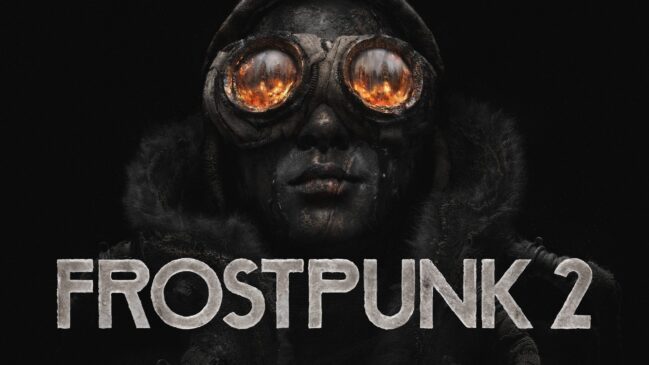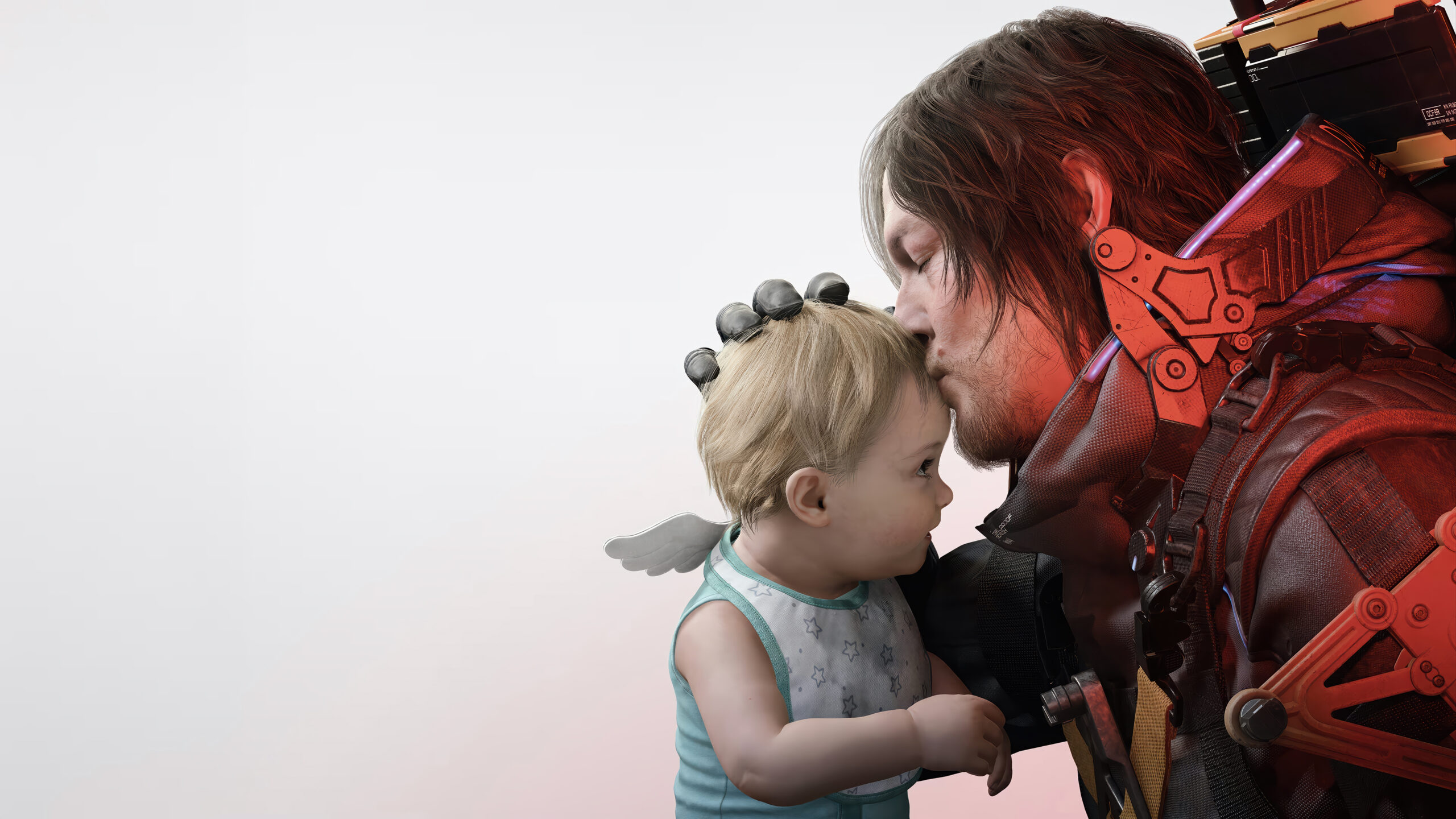
Few names in gaming carry the same weight and unpredictability as Hideo Kojima, and Death Stranding 2: On the Beach is yet another testament to his ability to defy convention. A direct sequel to the polarizing and ambitious Death Stranding (2019), this follow-up once again plunges players into a fractured world where connection, solitude, and cryptic symbolism collide in breathtaking fashion. Building upon the narrative and gameplay foundations of the original, Death Stranding 2 is both a continuation and a bold reimagining—one that takes bigger risks, expands the lore, and amplifies its emotional and thematic core.
Set years after Sam Porter Bridges’ epic journey to reconnect a broken America, On the Beach explores a new frontier where the boundaries between life, death, and the unknown have become even more fragile. Familiar faces return, including Léa Seydoux’s Fragile and Norman Reedus as Sam, but the tone is more philosophical, more intimate, and paradoxically more alien.
With upgraded gameplay mechanics, new traversal systems, more interactive environments, and a deeply personal story that questions the nature of freedom, legacy, and purpose, Death Stranding 2 is not just a sequel—it’s an evolution. As with its predecessor, it won’t be for everyone, but for those willing to embrace its strangeness and ambition, it offers a haunting, unforgettable experience.
AT A GLANCE
Genre: Action-adventure
Developer: Kojima Productions
Publisher: Sony Interactive Entertainment
Platform: PlayStation 5
Release Date: June 26, 2025
Story
Hideo Kojima has never hidden his love for cinema, and Death Stranding 2: On the Beach is, in many ways, his most cinematic project to date. The game doesn’t just tell a story—it immerses you in one, unraveling it through long, contemplative cutscenes, cryptic dialogue, surreal imagery, and moments of eerie silence that say more than most games manage in hours of exposition. It’s storytelling that’s as ambitious as it is unconventional—and unsurprisingly, it won’t land the same way for everyone.
The story picks up years after the events of the first game. Sam Porter Bridges is no longer just a delivery man—he’s a reluctant legend, pulled back into the fold by a new threat tied to the “Beach,” the liminal space between life and death. This time, the stakes feel both bigger and more personal. A strange cult-like force known as the Drawn is emerging, bent on reshaping the very nature of existence. Familiar faces return—Fragile, Lou, and Deadman among them—but they’ve all been altered by time, trauma, and consequence.
Tonally, Death Stranding 2 swings between apocalyptic dread and quiet, human moments of connection. Kojima leans into themes of legacy, sacrifice, and what it means to truly “connect” in a world that has never been more fragmented. You’re not just fighting enemies—you’re facing grief, regret, and the ever-thinning veil between realities.
The narrative structure is deliberately non-linear and often abstract, more akin to art-house sci-fi than typical video game storytelling. Think Annihilation, Stalker, or 2001: A Space Odyssey—films that don’t handhold or explain every detail. Kojima doesn’t care if you “get it” right away. He’s more interested in building atmosphere and emotional resonance than in delivering a clean, tidy plot.
This approach works because of how grounded the performances are. Norman Reedus brings a quiet intensity to Sam—someone tired of being the world’s savior. Léa Seydoux’s Fragile is a standout once again, given far more emotional depth this time around. And the supporting cast, including new characters like Maëlle (played by Elle Fanning), add nuance to a story that’s as much about inner healing as it is about cosmic mystery.
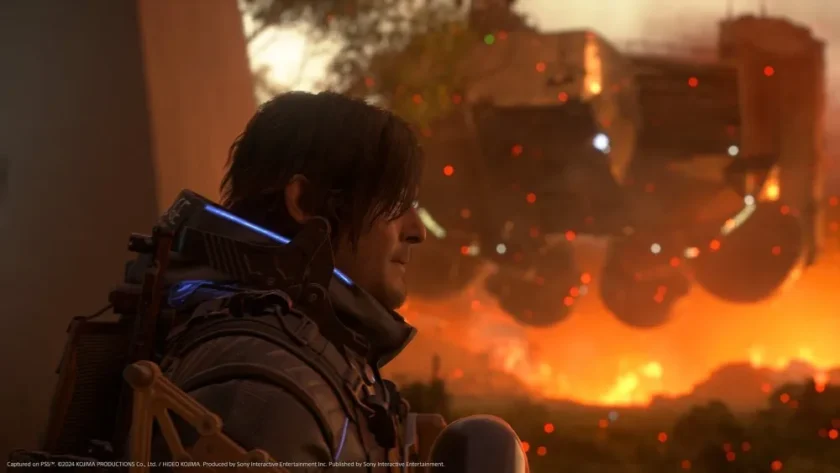
What’s remarkable is how well the narrative is integrated into the gameplay. Traversing desolate landscapes isn’t just a mechanical exercise—it reflects Sam’s emotional state, his isolation, and the persistent weight of memory. Kojima has always blurred the line between storytelling and interaction—Metal Gear Solid 2 famously deconstructed the idea of player agency—and here, he uses delivery missions, environmental design, and even the layout of the Beach itself to subtly advance character arcs and themes.
Is it self-indulgent at times? Absolutely. Some cutscenes go on far longer than they need to. Some metaphors are repeated so often they start to lose meaning. But there’s no denying the power of Kojima’s voice. In a medium often dominated by safe, linear plots, Death Stranding 2 dares to be poetic, philosophical, and wildly unconventional.
And like many of the films it evokes, this story isn’t about providing easy answers. It’s about questions: What does it mean to carry the weight of others’ expectations? Can we ever truly move on from loss? And in a world where everyone is virtually connected, why do we still feel so alone?
Gameplay
If you played the first Death Stranding, you probably already know what you’re in for—hauling cargo across vast, desolate terrain, carefully balancing your load while managing stamina, route planning, and the occasional encounter with a ghost or hostile human. That basic structure is still very much intact in Death Stranding 2: On the Beach, but Kojima Productions has taken huge strides to refine and expand the experience in meaningful ways.
Traversal, the heart of the game, feels smoother this time around. Sam’s movement is more responsive, and the world is more dynamic than ever. Weather isn’t just cosmetic—it changes in real time and actively shapes how you play. Acid rain, snow, and even earthquakes can transform your route mid-journey, forcing you to rethink your approach. Thankfully, you’ve got more tools now—portable shelters, advanced gear, and better vehicles that make crossing the landscape less frustrating and more strategic.
Combat, once clunky and optional, now feels like a proper part of the toolkit. There’s a greater emphasis on stealth and tactics, but when fights do break out, they’re faster, more fluid, and way more satisfying. The enemy AI has been upgraded, and new threats keep you on your toes. It’s still not a shooter, and it’s not trying to be one—but it feels like Kojima finally found a better balance between tension and action.
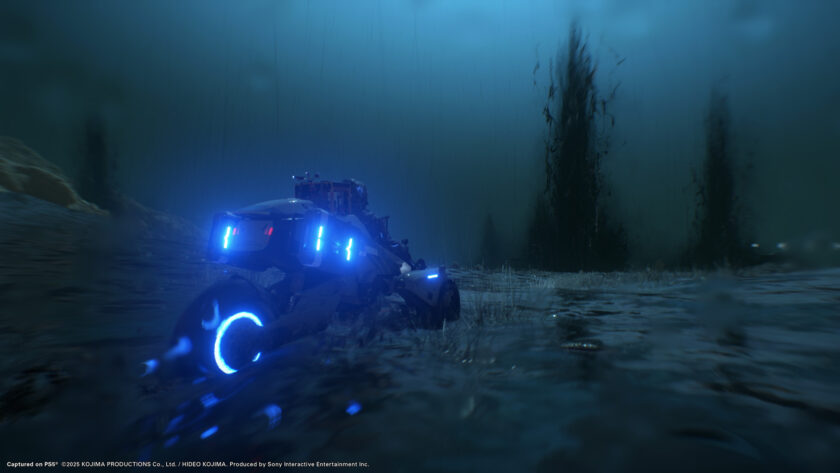
The sequel also adds some truly inventive features. Buddy Bots—once background helpers—can now follow you, help fight, or even offer lighthearted banter. They feel like true companions instead of just tools. Customizable exosuits let you tailor your playstyle: stealthy and light, strong and slow, or somewhere in between. There’s even a skill tree system now that gives you more control over how Sam grows.
One of my favorite new additions? Music. You can actually carry and play instruments. It’s not for buffs or stat boosts—it’s for creating little emotional moments in the middle of nowhere. You might sit by a cliff, strumming a tune while your Lou Unit coos softly. It sounds minor, but it really drives home what Death Stranding is all about: connection, mood, and quiet reflection.
And then there’s the Beach. This surreal realm was always at the narrative core of the original, but now you get to explore it more directly—including in haunting underwater sequences. These moments are some of the most visually striking and emotionally unsettling in the game, blurring the line between reality and metaphor in true Kojima fashion.
There’s also a massive improvement to the multiplayer infrastructure. Player-built structures feel more lasting and impactful. When you stumble upon a bridge someone else left behind—or a weather station keeping you dry in a storm—you feel that strand system working, connecting you to others without a single word exchanged.
Kojima’s flair for bending the rules is still here in full force. The game shifts tones on a whim—from emotional to absurd to surreal—and somehow, it works. It’s thoughtful and strange, heartfelt and haunting. Whether you’re building a new zipline network across a mountain range or hiding from invisible threats in a red sea, the game keeps surprising you.
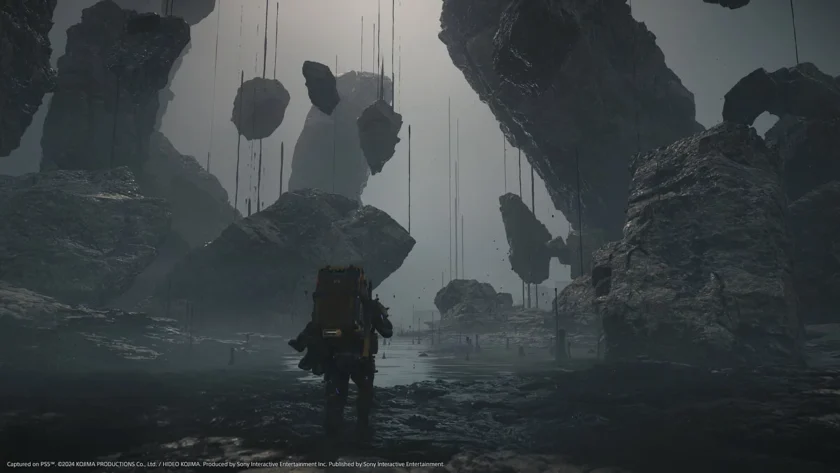
At the end of the day, Death Stranding 2 doesn’t completely reinvent the wheel, but it doesn’t need to. Instead, it fine-tunes the formula, builds on its best ideas, and delivers a deeper, more rewarding experience. It’s still not going to be for everyone—but for those who clicked with the original, this is Kojima at his most confident, creative, and unapologetically weird.
Visuals, Audio, and Technical Performance
Let’s not beat around the bush—Death Stranding 2: On the Beach is one of the most visually stunning games of this generation. Built on the phenomenal Decima Engine, the game doesn’t just look good; it feels alive. From the granular textures of rain-soaked gravel to the shimmering dreamscapes of the Beach, every frame is worthy of a screenshot. Environments are wildly diverse—ranging from sun-baked desert ruins to dense forests, icy peaks, and underwater dream sequences. Every location feels distinct, not just in look, but in emotional tone.
Characters are rendered with a level of detail that borders on unnerving. You can see pores, subtle expressions, the glint of fear or doubt in someone’s eye. It’s not just fidelity for the sake of it—it serves the story, grounding the surreal narrative in very real, human faces. Kojima’s cinematic sensibility shows in every camera angle and cutscene. Whether you’re watching Sam struggle through a storm or quietly listening to someone grieve, the visual storytelling is immaculate.
On the technical front, the game is impressively optimized. Performance mode holds a steady 60 FPS on PlayStation 5, while quality mode delivers crisp visuals at 30 FPS with no noticeable hitching or lag. Even during chaotic set pieces—boss fights, BT storms, or full-on beach collapses—the game runs smooth as silk. The transitions between gameplay and cutscene are so seamless, you barely notice when control is handed back to you. And loading times? Practically non-existent. It’s the kind of polish you wish every AAA game shipped with.
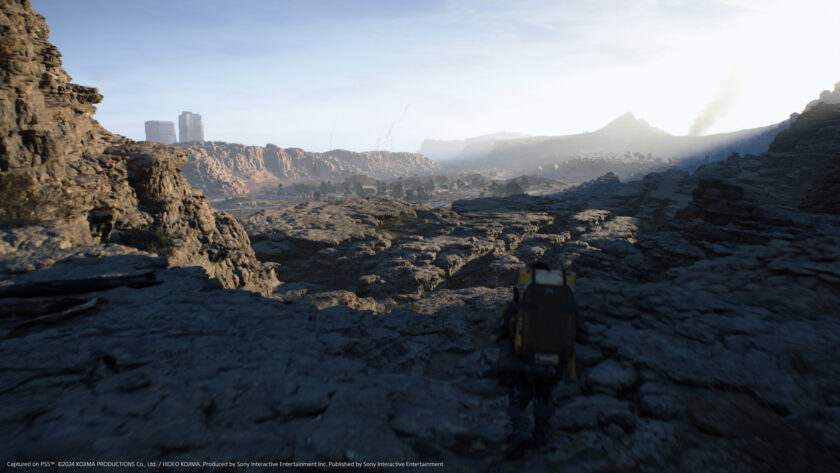
Now let’s talk about the sound design—and more importantly, the music.
The audio work here is beyond excellent. Ambient noise is so crisp you’ll feel the crunch of snow, the buzz of static when BTs are near, and the creak of Sam’s boots when you’ve overloaded him with cargo. Voice acting is top-tier, as expected from a cast that includes Norman Reedus, Léa Seydoux, Elle Fanning, and Troy Baker. Their performances aren’t just well-delivered—they’re raw, emotional, and entirely believable. They ground the game’s outlandish narrative in real human emotion.
But the real MVP of this game? The soundtrack.
Kojima has always had a golden ear when it comes to music choices, but Death Stranding 2 takes that to another level. Teaming up with Woodkid—yes, that Woodkid—was a stroke of genius. The score is dynamic and layered, built to respond to your journey in real time. As you trudge through desolation, melodies rise subtly; when you crest a peak or emerge from danger, a full orchestral swell or haunting piano kicks in. It’s not just background music—it’s storytelling.
There are moments where a song starts playing during a quiet walk, and suddenly you realize you’ve stopped moving—not because you had to, but because the music hit you that hard. It wraps around you like a memory you never had. Whether it’s a slow-burning Woodkid anthem or a soft, emotional string arrangement from Ludvig Forssell, the soundtrack elevates every scene. The in-game music player even lets you unlock tracks and play them during walks, turning every trek into a personal cinematic moment.
It’s rare that music in a game feels this emotionally tethered to gameplay. It doesn’t just set the mood—it is the mood. And honestly, without it, the game wouldn’t be half as powerful.
Final Thoughts
Summary
Death Stranding 2 is more than just a pretty game it's a technical, artistic, and mechanical triumph. The visuals are breathtaking, the sound design is rich and alive, and the Decima Engine powers it all with smooth, near-flawless performance. But it's the combination of all these elements gameplay included that makes the experience so special. Traversing vast, broken landscapes isn't just something you do it's something you feel. The weight on your back, the resistance of the terrain, the tension of hostile zones it all builds into a deeply immersive rhythm. And then there's the music my god, the music. It doesn't just accompany your journey, it elevates it. It turns quiet walks into meditative moments, makes climbs feel triumphant, and turns solitude into something poetic. Kojima and his team don't just score the game they score your experience. Every beat, every track, every note feels handcrafted to resonate with the world around you and the emotional state you're in. This isn't just a sequel it's a symphony of design. Every mechanic, every visual flourish, every haunting melody comes together to form something truly unforgettable. If you ever doubted that video games could match, or even surpass, the emotional depth of film, just play Death Stranding 2 preferably with a good pair of headphones and an open heart. It's not just a game it's a journey. A strange, stunning, soul-stirring journey.



